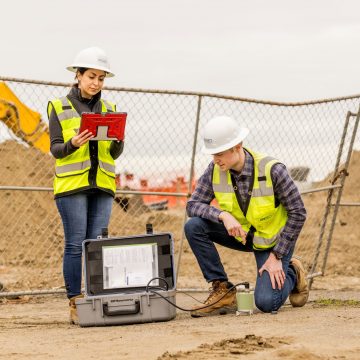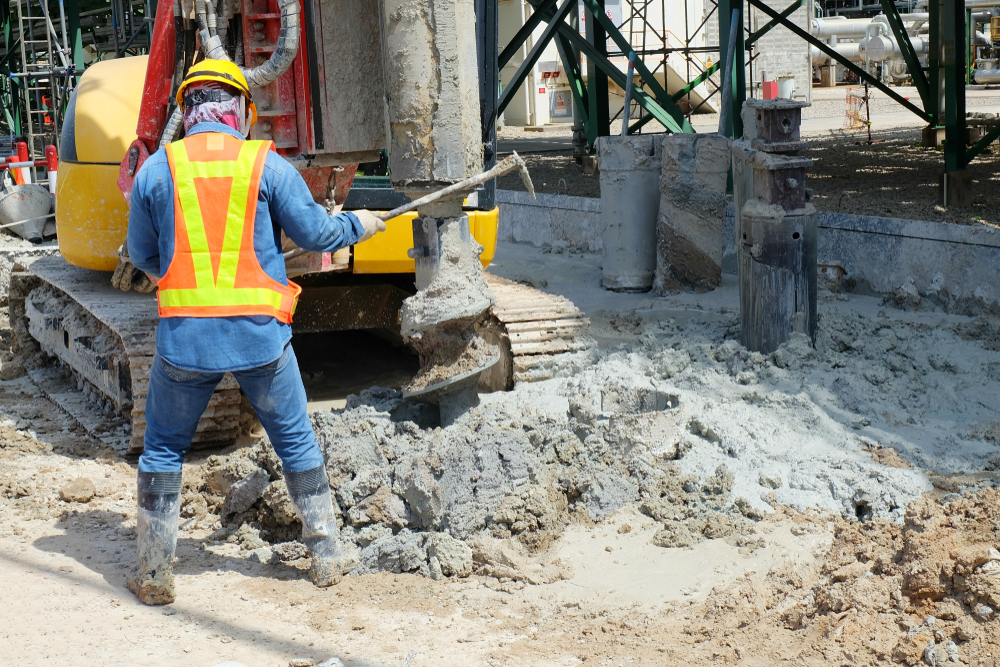Exploring the Perks of Geo Tech Engineering for Urban Planning
Exploring the Perks of Geo Tech Engineering for Urban Planning
Blog Article
Comprehending the Comprehensive Role of Geotechnical Designers in Ground Investigation and Dirt Evaluation for Building And Construction Tasks
Geotechnical engineers are indispensable to the success of building projects, supplying important understandings via thorough ground examinations and soil evaluation. Their expertise in analyzing dirt actions and utilizing advanced testing strategies educates essential decisions that promote structural honesty and security. By determining possible hazards and collaborating with multidisciplinary groups, these specialists dramatically influence job results, consisting of effectiveness and cost-effectiveness. The complexities of their duty often extend past these features, motivating a deeper expedition into the methodologies they use and the implications of their findings on total task stability.
Function of Geotechnical Designers
The essential role of geotechnical engineers in building jobs can not be overemphasized, as they supply essential insights into soil behavior and site problems. These professionals are entrusted with assessing the suitability of the ground for different sorts of frameworks, making certain safety and security throughout the building and construction procedure. Their know-how includes a variety of tasks, consisting of website characterization, soil tasting, and laboratory screening, which are vital for figuring out the mechanical and physical homes of the soil.
Geotechnical designers use their findings to develop foundational styles that suit load-bearing demands and alleviate risks related to dirt negotiation, liquefaction, and slope security. They play a critical duty in recognizing possible threats, such as groundwater changes and contamination, which can dramatically influence task practicality. They work together with engineers, civil engineers, and specialists to make certain that geotechnical factors to consider are integrated right into the total layout and building phases.
Ground Examination Techniques
Ground investigation techniques develop the backbone of geotechnical design, allowing designers to obtain a detailed understanding of subsurface problems. These strategies are important for examining dirt buildings, determining groundwater degrees, and recognizing prospective geological hazards.
Common approaches consist of borehole exploration, which enables for the removal of soil samples at numerous midsts, giving important information for analysis. Additionally, in situ testing methods, such as Common Penetration Tests (SPT) and Cone Penetration Tests (CPT), are used to evaluate dirt toughness and thickness straight in the ground.
Geophysical techniques additionally play a considerable role in ground investigations. Techniques such as seismic studies and electric resistivity tomography help analyze subsurface attributes without substantial excavation. geotech engineer. These non-invasive techniques are especially beneficial in delicate or big areas where disturbance must be reduced
Additionally, exploratory trenches can be dug deep into to visually check soil layers and determine any type of anomalies. Each of these strategies contributes one-of-a-kind understandings, allowing geotechnical designers to develop precise website assessments and inform design choices. In summary, a mix of these ground examination methods is crucial for successful construction jobs, guaranteeing safety and security and structural honesty.
Soil Analysis Techniques
Dirt analysis approaches are vital for understanding the chemical and physical properties of soil, which directly affect the style and construction of foundations and other structures. Numerous strategies are used to assess soil characteristics, making certain that geotechnical designers obtain exact data for educated decision-making.
One frequently made use of method is grain size analysis, which figures out the distribution of particle dimensions within a dirt sample. This is essential for identifying soil types and predicting their habits under tons. One more important strategy is Atterberg limits screening, which assesses the plasticity and moisture material of fine-grained soils, supplying insights into their engineering residential properties.

Field examinations, such as Typical Penetration Tests (SPT) and Cone Penetration Examinations (CPT), deal beneficial in-situ data pertaining to dirt toughness and stratification. Collectively, these soil analysis click techniques develop the structure of geotechnical investigation, allowing designers to design effective and safe frameworks customized to the certain problems of the website.
Risk Mitigation Methods
Applying efficient risk reduction techniques is important for geotechnical designers to attend to possible difficulties in building and construction tasks. These approaches are crucial in recognizing, examining, and taking care of threats connected with soil problems, website stability, and groundwater fluctuations, which can negatively impact job outcomes.
One primary approach check involves conducting extensive site investigations that use advanced geophysical techniques and extensive soil tasting. By getting exact information on subsurface problems, designers can make educated decisions on design and building methods. In addition, utilizing anticipating modeling tools permits for the simulation of various situations, allowing designers to visualize potential problems and apply precautionary actions.
Furthermore, establishing clear communication networks among job stakeholders promotes a collaborative method to risk administration. Routine updates and appointments make sure that all celebrations recognize the progressing site conditions and can adapt their methods appropriately.

Influence On Building And Construction Projects
The efficiency of threat mitigation approaches directly influences the general success of construction jobs. Geotechnical engineers play an essential function in this domain name, as their experience in ground examination and dirt analysis educates important decisions throughout the construction process. By properly analyzing dirt problems and identifying potential risks, these specialists enable task teams to develop efficient remedies that minimize risks connected with ground instability, water seepage, and other geotechnical difficulties.
The effect of detailed geotechnical analysis appears in different elements of building and construction jobs, including expense management, project timelines, and structural stability. Early recognition of problems permits timely treatments, lessening expensive click to investigate hold-ups and budget overruns. Additionally, a thorough understanding of site conditions improves the layout and engineering procedure, making certain that structures are built to endure environmental pressures and prospective all-natural catastrophes.
Ultimately, the payments of geotechnical engineers are essential to the effective execution of building tasks. Their job not just fosters safety and security and compliance with regulations but also enhances the long-lasting sustainability of frameworks, ensuring that they perform successfully throughout their designated life expectancy. The cooperation in between other stakeholders and geotechnical groups is necessary for accomplishing optimum outcomes in building and construction undertakings.
Final Thought
Finally, geotechnical engineers carry out an important function in building projects through comprehensive ground investigations and soil evaluations. Their expertise in examining dirt behavior, employing different investigation strategies, and applying danger reduction methods considerably adds to the architectural integrity and safety and security of built atmospheres. By teaming up with multidisciplinary teams, these professionals improve project efficiency and guarantee compliance with security requirements, eventually leading to effective building outcomes and minimized possible risks.
Geotechnical designers are essential to the success of construction jobs, giving important understandings through extensive ground investigations and dirt evaluation.The critical role of geotechnical designers in building and construction projects can not be overstated, as they give vital insights right into dirt actions and website problems. Their expertise incorporates a wide variety of tasks, including site characterization, dirt tasting, and laboratory screening, which are essential for establishing the mechanical and physical residential properties of the dirt.
By precisely analyzing dirt problems and recognizing prospective dangers, these experts make it possible for task teams to create efficient solutions that decrease risks connected with ground instability, water seepage, and other geotechnical challenges.
In final thought, geotechnical designers execute an essential function in construction jobs via extensive ground investigations and soil evaluations.
Report this page